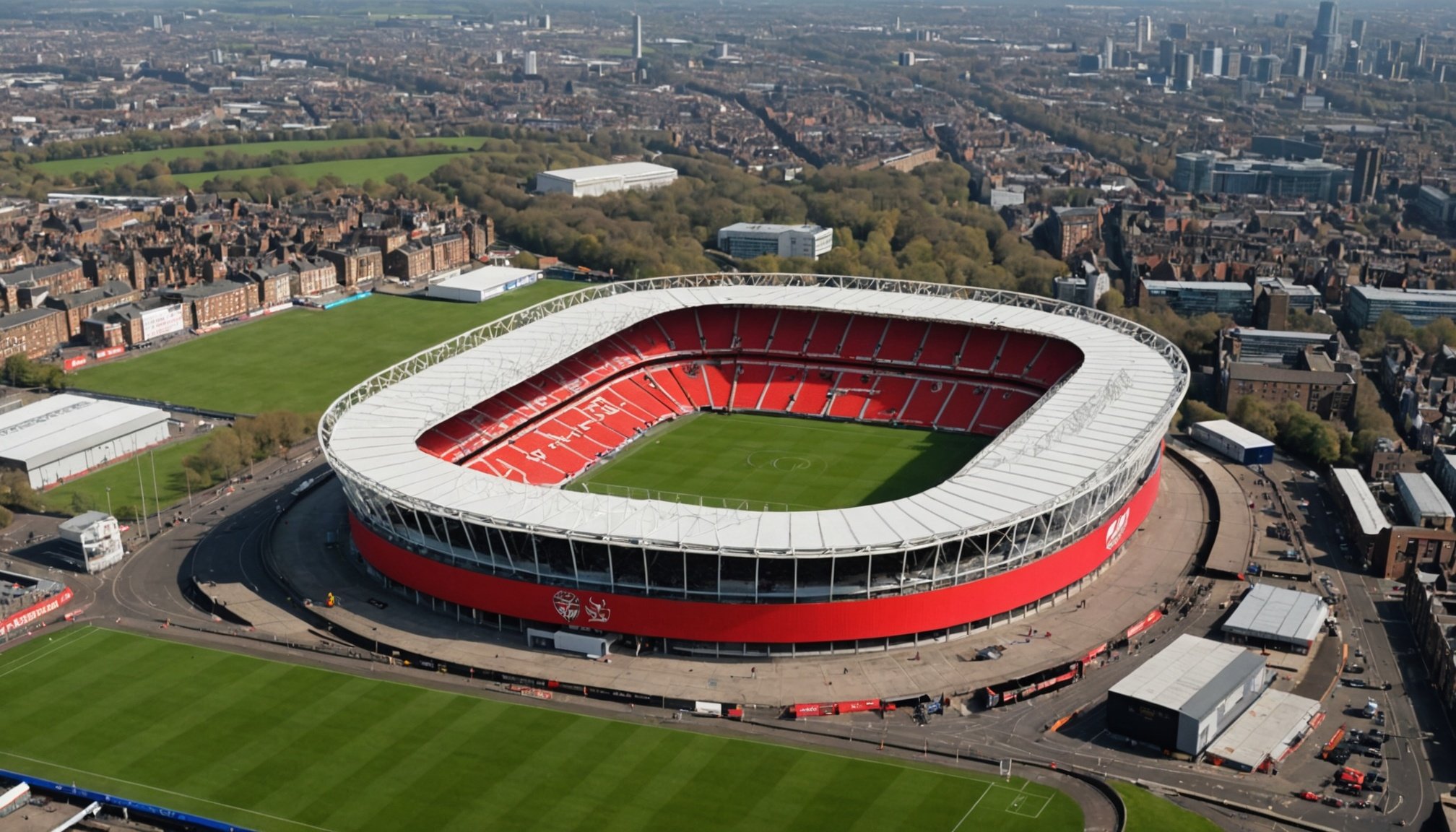Defining Iconic UK Football Stadiums
Iconic football stadiums UK-wide are more than mere venues; they embody the heart and soul of the sport’s deep-rooted tradition. To be deemed iconic, a stadium must possess a mix of historic significance, cultural impact, and enduring influence on UK football identity. These factors intertwine with each stadium’s unique story within the broader UK stadium history.
Firstly, the criteria for a stadium to be considered iconic typically include longevity, hosting landmark matches, and architectural distinctiveness. Many of these stadiums have witnessed decades of memorable moments—whether league triumphs, legendary player debuts, or passionate fan celebrations. Their presence has shaped local communities and become symbols of regional pride.
Have you seen this : How can grassroots football impact youth development in the UK?
The cultural and historical significance of these venues extends beyond the pitch. They reflect socio-political contexts of their eras and have been stages where football’s evolution played out visibly. From the terraces packed with loyal fans to the innovations in stadium design, each element contributes to the rich UK football stadium heritage.
Moreover, these venues influence UK football identity profoundly. Supporters identify emotionally with their home grounds, which foster a sense of belonging and continuity through generations. This connection is vital for sustaining the sport’s popularity and preserving its traditions. Studying these stadiums reveals how football in the UK is more than a game—it’s a shared cultural experience anchored in iconic spaces.
Topic to read : What Are the Key Elements That Define a Successful Football Team in the UK?
Wembley Stadium: The National Symbol
_
Wembley Stadium history is deeply intertwined with the evolution of football in the UK. Originally opened in 1923, the iconic venue quickly became the beating heart of British football. The original structure famously hosted the 1966 World Cup Final, a landmark match where England claimed its only World Cup triumph, a moment forever etched in the nation’s sporting memory. This game exemplifies the stadium’s role in UK football milestones, symbolizing national pride and sporting excellence.
The stadium underwent major redevelopment, reopening in 2007 as a state-of-the-art facility designed to meet modern standards while honoring its heritage. This redevelopment preserved many architectural elements, transforming Wembley into an architectural icon blending tradition with innovation. Its distinctive arch has become a new symbol as recognizable as Big Ben or the London Eye, reinforcing its status in UK football culture.
Beyond the World Cup, Wembley hosts numerous major football events in the UK, including the annual FA Cup Finals and England international fixtures. These events showcase its continuing relevance as the premier venue for crucial football occasions, drawing fans nationwide. Through nearly a century of sporting history, Wembley embodies the spirit of British football and remains a national symbol accessible and cherished across generations.
Old Trafford: The Theatre of Dreams
Delving into the historic legacy and cultural significance of Manchester United’s iconic stadium.
Old Trafford has long been intertwined with the history of Manchester United stadium, serving as a cornerstone for the club since its opening in 1910. Known famously as the “Theatre of Dreams,” this stadium holds a special place not only in football history but also within the local community, symbolizing decades of passion and sporting excellence.
Throughout its existence, Old Trafford has hosted numerous memorable matches, cementing its status as a fortress and a stage for unforgettable football moments. From thrilling league deciders to historic cup matches, the stadium has witnessed moments that define the spirit and resilience of Manchester United. The stadium’s evolving architecture mirrors the club’s journey, expanding and modernizing to meet contemporary demands while preserving its unique heritage.
Aside from its sporting significance, Old Trafford influences the surrounding area by serving as a hub for fans and locals alike. The stadium’s presence boosts economic activity and fosters a shared identity, contributing meaningfully to the community’s culture and cohesion. This mutual relationship highlights how Old Trafford extends beyond a venue, embodying both tradition and ongoing progress.
Anfield: The Home of Liverpool Legends
Anfield’s storied history runs deep, intertwining with the legacy of Liverpool FC since the club’s founding in 1892. Originally built as the home ground for Everton FC, the stadium became Liverpool’s fortress after a split in 1892, marking the beginning of a unique bond between the club and its fans. This Liverpool FC stadium is more than just a venue; it symbolizes passion, tradition, and an unwavering connection to the city.
Throughout its existence, famous matches at Anfield have etched unforgettable memories into football history. Nights like the dramatic comeback against Barcelona in the 2019 Champions League semi-final epitomize the stadium’s electric atmosphere. The sea of red and the iconic “You’ll Never Walk Alone” anthem create an environment that inspires players and intimidates opponents alike, making Anfield one of the most revered stadiums worldwide.
Anfield has seen several significant renovations to improve capacity and facilities while preserving its historic charm. Key milestones include the expansion of the Main Stand, which led to it becoming one of the largest Liverpool FC stadium sections, and the preservation of the iconic Kop stand renowned for its passionate supporter base. These upgrades underline the stadium’s commitment to maintaining its heritage while adapting to modern needs, ensuring it remains a beacon for Liverpool FC legends and fans for generations.
Celtic Park: Heart of Scottish Football
Nestled in the east end of Glasgow, Celtic Park stands as a monumental symbol of Scottish football. Known widely as one of the most iconic Scottish stadiums, it is the proud home of Celtic FC, a club steeped in rich heritage and tradition since its founding in 1887. Celebrated not just for its architectural grandeur but also for the passionate atmosphere generated by its supporters, Celtic Park has been a focal point of football culture in Scotland for well over a century.
Throughout its history, Celtic Park has undergone numerous transformations to modernize the venue and improve facilities, enhancing the spectator experience without sacrificing its historical essence. These upgrades have helped maintain its status as one of the largest football stadiums in the United Kingdom, with a seating capacity exceeding 60,000. Beyond football matches, the stadium has hosted numerous major events, including international fixtures, concerts, and significant cultural gatherings, reflecting its versatility and importance to the local community.
The cultural impact of Celtic Park transcends sport. It embodies the proud identity of Celtic FC and resonates deeply within Scotland’s social and historical fabric. The stadium is often seen as a pilgrimage site for fans, symbolizing unity, resilience, and the enduring spirit of Scottish football. As such, it continues to play an integral role not only in the sporting landscape but also in the broader cultural narrative of Scotland.
St James’ Park: Newcastle’s Football Fortress
St James’ Park history dates back to 1892 when it first opened as the home ground for Newcastle United. Over the decades, the Newcastle United stadium has undergone significant evolution, reflecting both the growth of the club and changing architectural trends in stadium development across the UK. Initially, the stadium featured basic stands and facilities, but expansions in the 20th and 21st centuries transformed it into a modern arena capable of holding over 52,000 fans.
One of the most defining aspects of St James’ Park is its rich legacy of hosting notable matches. From thrilling Premier League clashes to memorable cup fixtures, the stadium has been the backdrop to many historic moments that have shaped Newcastle United’s identity on the football stage. These events highlight not only the competitive spirit of the club but also the passionate support from fans who fill St James’ Park season after season.
Beyond football, the stadium plays a crucial role in the city’s identity. It stands as a landmark reflecting Newcastle’s pride and tradition, deeply intertwined with the community. The evolution of St James’ Park mirrors the city’s own development, making it much more than just a venue—it’s a symbol of local heritage and collective spirit. This connection underscores why St James’ Park remains central in conversations about stadium evolution in the UK and Newcastle United’s enduring legacy.
The Importance of Heritage in UK Stadiums
Understanding the UK stadium heritage is crucial to appreciating the rich tapestry of football traditions that define clubs and their communities. Stadiums in the UK are more than just venues; they are landmarks where memories of legendary matches and shared celebrations contribute to a strong sense of identity among fans. This deep connection between the stadium’s past and fan culture drives loyalty and passion, often passed down through generations.
Preserving this heritage while embracing necessary renovations presents a delicate balance. Many UK stadiums have undergone modernisation efforts to meet safety standards, improve fan amenities, and enhance matchday experiences. However, clubs frequently strive to retain architectural features or iconic elements that celebrate the stadium legacy, maintaining a tangible link to their history. These preservation efforts honor the club’s roots while ensuring that stadiums remain functional and welcoming for future fans.
The lasting legacies of these stadiums extend beyond football, symbolizing community pride and cultural heritage. As UK stadiums evolve, their future significance hinges on continuing this blend of tradition and innovation, ensuring that heritage remains a living, integral part of the football experience. This approach fosters a strong continuity between past, present, and future generations of supporters.






